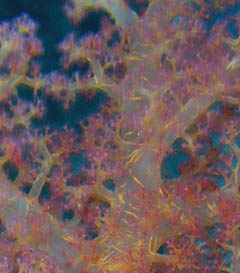Have you taken a fancy to a particular species or genus of fish? You can vastly improve your chances of spotting and studying it, if you do a little homework before your dive trip.
The secrets of Where and When
Finding your favourite fish has less to do with luck or coincidence than
you might think. Your chance of success increases dramatically if you know
the preferences of your "prey".
At what time of day is it active?
- dawn
- midday
- night
- etc.
Where does it normally hang out (habitat)?
- depth (shallow, deep, ...)
- reef type (slope, wall, ...)
- bottom conditions (sand, rubble, coral, ...)
- currents (none, strong, tidal, ...)
- etc.
Time could also include seasons, i.e. time of year. This is more relevant in temperate waters than in the tropics where it's more less "high season" all year round.
Start with a particular
species
Learn all you can about the characteristics of your favourite species or a family/genus.
-
Colour markings, possible differences be-tween male and female and juveniles - and similar species.
-
Appearance (shape, number and placement
of fins, etc.) -
Behavioural patterns (mating, nesting,
feeding, etc.)
Plan ahead of your next dive
trip
Well ahead of your next dive trip you may use encyclopaedias or the
internet to gather details about your species. If possible, try to get
information about size, distribution, habitat, feeding,
reproduction, behaviour, and other characteristics.
You may also find it helpful to try and learn more about the reef types and conditions that are prevalent in the area you're going to visit.
Becoming more knowledgeable about marine life you'll know when, where and how to do the best spotting once you've arrived at your destination, thus getting the best return on your investment :-)
